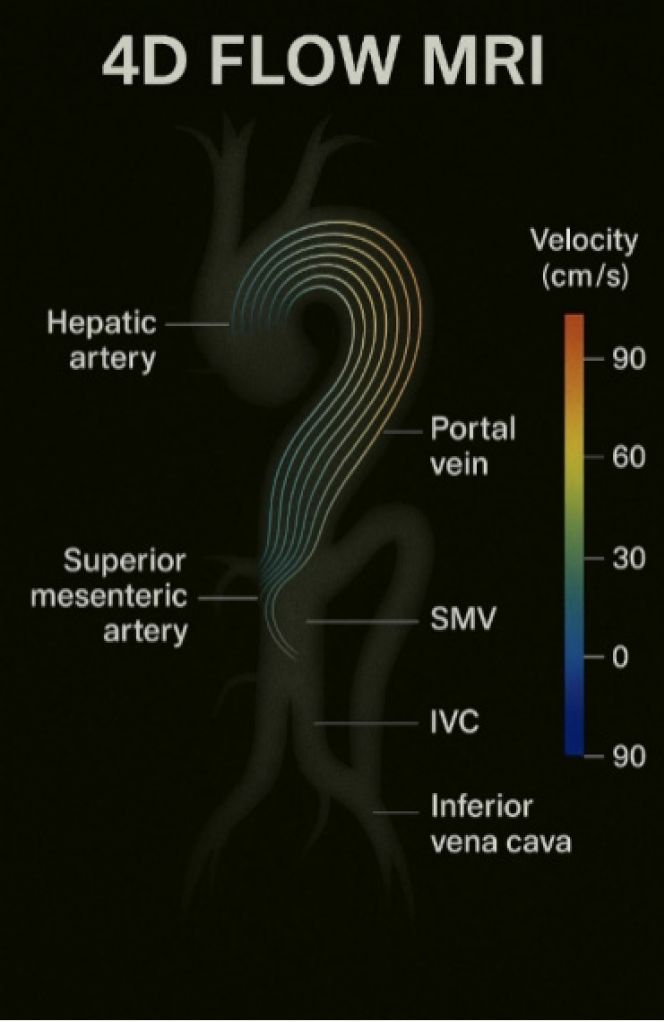Copyright
©The Author(s) 2025.
World J Radiol. Jun 28, 2025; 17(6): 106582
Published online Jun 28, 2025. doi: 10.4329/wjr.v17.i6.106582
Published online Jun 28, 2025. doi: 10.4329/wjr.v17.i6.106582
Figure 1 Representative four-dimensional flow magnetic resonance imaging showing abdominal vasculature including the hepatic artery, portal vein, superior mesenteric artery, and inferior vena cava.
Velocity-encoded streamlines are color-coded from 0 cm/second to 100 cm/second. This visualization exemplifies how four-dimensional flow magnetic resonance imaging can dynamically map blood flow direction and velocity in real time, aiding in the evaluation of pediatric gastrointestinal disorders. MRI: Magnetic resonance imaging; IVC: Inferior vena cava; SMV: Superior mesenteric vein; 4D: Four-dimensional.
- Citation: Mukundan A, Gupta D, Karmakar R, Wang HC. Transforming pediatric imaging: The role of four-dimensional flow magnetic resonance imaging in quantifying mesenteric blood flow. World J Radiol 2025; 17(6): 106582
- URL: https://www.wjgnet.com/1949-8470/full/v17/i6/106582.htm
- DOI: https://dx.doi.org/10.4329/wjr.v17.i6.106582









